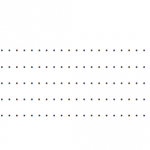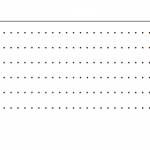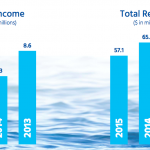Active 2016 makes this desalination expect a compelling buy


The global desalination market is expected to almost double over the next 5 years.
Consolidated Water’s winning bid for the Rosarito project means it will participate in the design, construction, and operation of the largest desalination plant in North America.
CWCO’s majority interest in Aerex came at a very reasonable valuation and provides the company with many opportunities to leverage and diversify their business.
Ongoing negotiations with the Water Authority Cayman make CWCO a risky investment.
Following the Rosarito and Aerex developments, I find CWCO to be a solid buy below $13, but investors should monitor the WAC negotiations.
Consolidated Water (NASDAQ:CWCO) is a microcap (market cap = $183.1M) desalination-specific water utility based in the Cayman Islands. Desalination is an energy intensive process that converts salt water into fresh water. Though desalination’s high energy requirements result in more expensive water (and environmental concerns), the amount of global desalination capacity is growing rapidly-and this growth is expected to continue. Consulting firm Frost & Sullivan predicts that the market should nearly double over the next 5 years, growing from $11.7B in 2015 to $19.1B by 2020. Moreover, the UN predicts that desalination’s share of the global supply of fresh water will jump from its current 1% to 14% by 2025.
This growth is driven by several factors, most notably taxed traditional water supplies (rivers, lakes, aquifers, etc.) and population growth. Clearly, this is a rapidly growing industry, and many major, publicly traded water utilities (e.g. Veolia (OTCPK:VEOEY), Suez (OTCPK:SZEVY)) build and operate desalination plants. However, CWCO is the sole publicly traded water utility that focuses essentially exclusively on desalination. To date, their desalination projects have been relatively modest, and this is reflected in CWCO’s small market cap. However, Consolidated Water has ambitions to become a significant force in the global desal market, and these ambitions just received a major boost. More than that later, but first, a brief company overview:
CWCO got its start in the 1970s and 1980s by providing desalinated water to hotels and utilities in the Cayman Islands. The Cayman Islands, like many other tropical islands, have very few natural sources of fresh water. In 1995 the company went public and, through a combination of organic growth and acquisitions during the early 2000s, CWCO was able to significantly expand their business throughout the Caribbean. In addition to the Cayman Islands, CWCO also operates in the Bahamas, Belize, and the British Virgin Islands.
In 2012, the company stepped outside of the Caribbean when they built a desalination plant in Bali, Indonesia. This plant is now capable of generating 800,000 gallons of fresh water per day. Despite a serious and prolonged water shortage in Bali, the plant has been a disappointment, as CWCO has had trouble drumming up sales-a fact CWCO blames on the business environment and cultural differences in Indonesia. Though the plant has been a disappointment, and CWCO’s management clearly misjudged the market to at least some degree, there is still potential for the plant reverse course-though due to regulatory and economic headwinds, CWCO’s management does not anticipate any significant improvements in the short-term.
CWCO earns profits through three main segments: retail, bulk, and services. Retail and bulk comprise the majority of their business, accounting for 41% and 56% of 2015 revenues, respectively. In retail sales, CWCO sells water to residential, commercial, and select governmental customers, while bulk sales go directly to utilities, who then deliver water to local homes and businesses. The services segment essentially amounts to consulting and operational fees; this side of the business contributed to the final 3% of CWCO’s 2015 revenues.
Rosartio
For 5 years Consolidated Water has been pursing a project to build a 100M gallon per day desalination plant Rosartio, Mexico, which sits on the Pacific Ocean 10 miles south of the US-Mexico boarder. CWCO approached the Mexican government with the proposed desalination plant and has invested $37M to procure land, administer studies, and obtain permits to build the plant. Despite CWCO’s central role in driving the project, the Mexican government opened the project to competing bids, two of which came from respected water treatment companies Aqualia and Hyflux (OTCPK:HYFXY).
On June 16 th, CWCO announced that it had won the bid for the plant. The project is to broken into two components, with the plant initially coming online in late 2019 with a 50M gallon per day capacity that will be extended to 100M gallons per day by 2024-making it the largest desalination plant in North America. The contract for the plant is for 37 years, at which point it will be handed over to the state of Baja California.
While this great news for Consolidated Water, it is important to note that CWCO will retain a minority stake in the plant, which was their plan from the start. Though CWCO’s financial participation in the Rosarito project has been significant for a company of their size, CWCO has nowhere near the financial power to construct this plant on their own. For reference, the 50M gallon per day Carlsbad, CA plant, which was finished 6 months ago, cost $1B to build.
To help finance the project, CWCO paired with Suez Degremont and NuWater. Suez is a large French utility, and NuWater is Singapore-based water treatment specialist. In addition to helping finance the plant, these partners will add expertise in engineering and project management. In the most recent conference call, CWCO’s CFO stated he expects the company to retain a 15% stake in the plant. Despite the minority stake, going purely off of percentages, a 15% interest would ultimately result in an extra 15M gallons of capacity. With a 2015 daily capacity of 26.5M gallons per day, this would result in a 28% increase in volumes in 2019, and a 57% increase in 2024. Additionally, CWCO’s management has suggested that CWCO will handle a significant portion of the plant’s operation, meaning CWCO’s service segment should also see an increase in profitability.
For now, the exact outcome for CWCO is impossible to determine, as they are yet to finalize the terms the agreements with Suez, NuWater, and the Mexican government. However, from a simplistic and conservative point of view, it is possible to estimate the impact of Rosartio on CWCO’s earnings. Assuming all else equal, a profit margin of 13% (slightly below CWCO’s historical average), and a 1:1 ratio between volumes and revenues, CWCO’s net income would increase by ~$2M in 2019 and an additional ~$2M in 2024-purely from the increase in volumes. However, this ignores the potential for increased service revenues and an expanded profit margin. I particularly expect an expanded profit margin, as CWCO should be able assume an asset light role as it sells off its majority interest in the project to Suez and NuWater. Additionally, in general the project should benefit from the economies of scale that come with a mega desalination plant, which should also help margins.
Aerex
Though Rosartio is Consolidated Water’s largest development of 2016, CWCO also made a significant investment in February, when they paid $7.7 million to acquire a 51% stake in Aerex, a water-engineering firm based in Fort Pierce, Florida. Aerex’s products include membranes, filtration equipment, piping, and water storage equipment. Consolidated Water has done business with Aerex for years and considers it one of its top suppliers. This acquisition makes a lot of sense of CWCO, and has the potential to benefit the company in a variety of ways.
To begin with, CWCO seemingly bought their stake at a very cheap valuation. Per the 8-K filed in April, below are a few of Aerex’s more important balance sheet metrics as of Dec. 31, 2015:
Assets= $8M
Liabilities= $2M
2015 Revenues= $19M
2015 Net income= $4.7M
2015 Retained earnings (net income + dividends)= $5.5M
Based on this information, CWCO was able to buy into a profitable, marginally leveraged company for only 2.75x Aerex’s 2015 retained earnings-and this doesn’t even take into account any premium warranted for buying a controlling stake. CWCO did mention that Aerex’s earnings will be more variable than CWCO’s utility earnings, but this makes sense. Aerex is an industrial firm, while CWCO is a utility-one would expect a utility have more consistent earnings than an industrial. Nonetheless, even if Aerex’s business hit a local peak in 2015, it seems CWCO bought into the company at a very reasonable price.
Yet Aerex’s real value lies in the potential synergies between Consolidated Water and Aerex. Aerex’s business is predominately focused in the US, a region where CWCO has no operations. By buying into Aerex, it opens the door for CWCO to bring its prowess in designing, building, and operating desalination plants to the US. New business for CWCO is obviously a good development, but breaking into the US market would be a particularly major step forward for CWCO, as the economic stability of the United States is higher than that of most Caribbean nations. Additionally, Aerex has also done business in Japan and China. Though CWCO’s expansion into Asia has gone poorly thus far, if things turn around, Aerex could help CWCO drum up business in this region as well.
Finally, Aerex brings diversification to Consolidated Water’s business model. Aerex’s equipment can be applied to desalination, drinking water treatment, and wastewater treatment. It is unclear exactly how CWCO expects to leverage Aerex’s drinking water and wastewater treatment technologies, but CEO Rick McTaggart has stated that it “represents an important first step of the expansion of our business model into other water-related industries and markets.”
I entirely expect, and hope, that CWCO remains focused on desalination, but some product diversification would probably serve the company well. While desalination is expected to grow more rapidly than regular water treatment, traditional drinking water and wastewater treatment are still expected to see robust growth of 50% over the next 5 years-and I fully expect growth for these markets to remain healthy beyond 2020. Moreover, though the desalination market is projected to grow faster than traditional water treatment services, desalination is a lumpy business. Projects are generally large, expensive, and somewhat unpredictable, as they typically rely on governmental approval and support. If CWCO manages to develop a traditional water treatment arm, it would likely find some consistency in this stable, growing market.
Risks
While there is much to like about CWCO, especially following the developments of H1 2016, the company does face several significant risks. CWCO provides a comprehensive list of risks in their 10-K, which I suggest any prospective investors look over. Nonetheless, some risks stand out more than others. Below are what I believe to be several of the more serious potential problems.
Any discussion of CWCO’s risks should probably begin with their ongoing negotiations with the Water Authority Cayman (NYSE:WAC), the utility of the Cayman Islands. For years CWCO has provided desalinated water to WAC, who then distributes the water to its customers. After a long-term contact between WAC and CWCO to supply water expired in July 2010, CWCO has signed a series of 1-year deals to continue providing water to the Cayman Islands. For the most part, since the long-term contact expired 2010, negotiations have been contentious, as CWCO and the WAC were far apart on contact terms. However, while no long-term contact has been signed, on the last couple conference calls CWCO’s management has stated that the tone of the talks has become much more conciliatory, and they expect to reach an agreement with WAC. Their current 1-year contract is set to expire at the end of June, so CWCO should soon announce either a new extension or non-renewal of the contract. CWCO generated 55% of their 2015 gross profits from the Cayman Islands, so any discontinuation of part or all of their services in this region would have a severe impact on their earnings.
This issue of contracts also extends beyond the Cayman Islands. CWCO typically designs, builds, and operates the plants that they run. However, if a contract to operate a plant expires and is not renewed, CWCO loses out on future revenues derived from the plant (though CWCO is compensated for the plant itself).
There is also a geographic risk to investing in CWCO. All of their profitable operations are centered in the Caribbean. While the Cayman Islands (Aa3) and the British Virgin Islands (Aa1) have good credit ratings, Belize (Caa2) and the Bahamas (Baa2) sit at the investment-junk threshold. The economies of the Caribbean are also highly sensitive to global financial conditions, as tourism is a major component of their economies. Additionally, this area of the world is prone to intense weather patterns. Particularly rainy seasons will hurt CWCO’s sales, and should a tropical storm damage one of CWCO’s plants, it would cause CWCO to incur expenses to fix or rebuild the plant.
CWCO’s struggles in Bali highlight another risk. Building a desalination plant requires high capital investments. In the case of Bali, CWCO spent a great deal of money to build their plant, but they are now struggling to sell the plant’s water. If the Bali business continues to falter, CWCO will need to write off the value of this investment. Rosarito does not face these same risks, as CWCO has worked closely with local authorities to ensure the water will be delivered to Mexican utilities. However, should CWCO pursue another endeavor similar to Bali, where they attempt break into a new market without contracts, the risk of unsold water may again be an issue.
Finally, CWCO is a microcap stock with low average daily volumes (~110K/day over the last 10 trading days). Small companies are generally riskier investments, and CWCO is no expectation. Additionally, the low trading volumes means that compared to most other stocks, CWCO is relatively illiquid.
Financials, Valuation, & Shareholder Returns
Consolidated Water’s management is remarkably prudent with the company’s balance sheet. CWCO has zero long-term debt, and each share carries $2.79 of cash value; additionally, their current ratio sits at 4.91. Debt will probably rise as Rosarito ramps up, but CWCO has managed the Rosarito costs well thus far and has $44M in cash on their balance sheet. Therefore I doubt they will to assume a significant debt load to fund the project.
In 2015 Consolidated Water earned $56.1M in revenues and generated $7.5M in net income. While YoY revenues fell, YoY net income rose; this was largely attributed to lower energy costs, which impact revenues but not profits. At its current share price of $12.73, CWCO’s PE is 24.74 and its dividend yield is 2.48%. The yield is the product of a 58% payout ratio; it also worth noting that dividend growth is sporadic and has only averaged 2.4% over the last 10 years. CWCO does not currently have a buyback program and hasn’t for years. Though CWCO’s 10-year chart is far from impressive, it seemed to form a bubble before the financial crisis, which has skewed their 10-year performance. However, over the last five years, CWCO has performed relatively well, essentially tracking the performance of the Dow Jones Industrial Average (NYSEARCA:DIA).
Conclusion
I believe CWCO to be a nice investment at its current price. Between the Rosarito and Aerex developments, the company has great path for growth, though admittedly these investments will take time to unfold. Fortunately, with a 2.5% dividend, CWCO is actually one of the highest yielding water utilities trading on US exchanges. Though CWCO is clearly a riskier investment than Aqua America (NYSE:WTR) or American Water Works (NYSE:AWK), I also expect CWCO’s share price to appreciate considerably due to earnings growth. It is for this reason that I think CWCO is one of the few water utilities that actually provides value, as most other water utilities’ share appreciation is due to multiple expansion associated with the low-rates environment, rather than robust earnings growth.
In regard to earnings growth, based on CWCO’s past performance, their projected earnings from Rosarito ($2M+ in 2019), and their retained earnings from Aerex (~$2.5M), I expect CWCO to earn roughly $13M in net income by 2019. With 14.8M shares currently outstanding, this estimate would translate into a 2019 EPS of $0.88. Applying a PE multiple of 22 (its historical average) to these earnings would result in a 2019 share price of roughly $19.50-or a CAGR of 13% (excluding dividends).
CWCO is a growing company in a growing industry, and after securing the Rosarito contract and buying into Aerex, an investment in CWCO possess much less risk than it did at the start of the year. For investors interested in buying into CWCO, I think that anything below $13 is a good starting point, though CWCO does move a lot in trading, so patient investors may be able to catch it in the $10-$12 range. It is also worth remembering that more conservative investors may want to wait for further developments regarding the contract negotiations with the WAC before putting any money into the stock.
Disclosure: I am/we are long CWCO, VEOEY.
I wrote this article myself, and it expresses my own opinions. I am not receiving compensation for it (other than from Seeking Alpha). I have no business relationship with any company whose stock is mentioned in this article.
Editor’s Note: This article discusses one or more securities that do not trade on a major U.S. exchange. Please be aware of the risks associated with these stocks.
IMAGES:
CWCO Revenues by Region Source: CWCO 2015 Annual Report
CWCO Capacity by Region Source: CWCO 2015 Annual Report
Source: Google maps
CWCO and DIA 5-year performance Source: Google Finance
CWCO Net Income & Revenue 2013-2015 Source: CWCO 2015 Annual Report
For more on this story go to: http://seekingalpha.com/article/3983125-active-2016-makes-desalination-expect-compelling-buy










